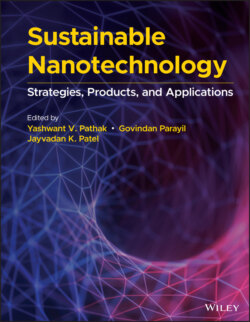Читать книгу Sustainable Nanotechnology - Группа авторов - Страница 34
1.4.3.1 Energy Conversion
ОглавлениеEven though there are many forms of energy available to us, we cannot directly use them. In everyday life, the most useful forms of energy for us are electrical and heat energy, but they can only be generated through conversion from other forms of energy. In reality, all forms of energy, including nuclear energy, come from the sun, hence solar energy is the common source. This energy can be converted to chemical, heat, wind/hydro, and mechanical energy, all of which can be ultimately converted to electrical energy, the most common form of energy used [107]. Every day, the sun releases a huge amount of energy, making solar energy abundant and cost‐free. This energy is released in the form of heat and radiation. Using photovoltaic cells, sunlight can be converted into solar energy that can then be converted into other forms of energies [108]. Conventional solar cells have two drawbacks; they are expensive to produce and their efficiency is rarely above 20%. This is mainly due to the energy of the photons in the cell being larger than the bandgap energy, the right amount of energy needed for the solar cell to work. To correct this, solar cells are enhanced with quantum dots. Due to their variation in size, quantum dots are able to produce various bandgaps that allow the photons that previously had larger energy to pass through. In addition, solar cells made of nanomaterials, such as nanocrystalline silicon, are capable of increasing the efficiency of solar cells by 40–50% [109].
